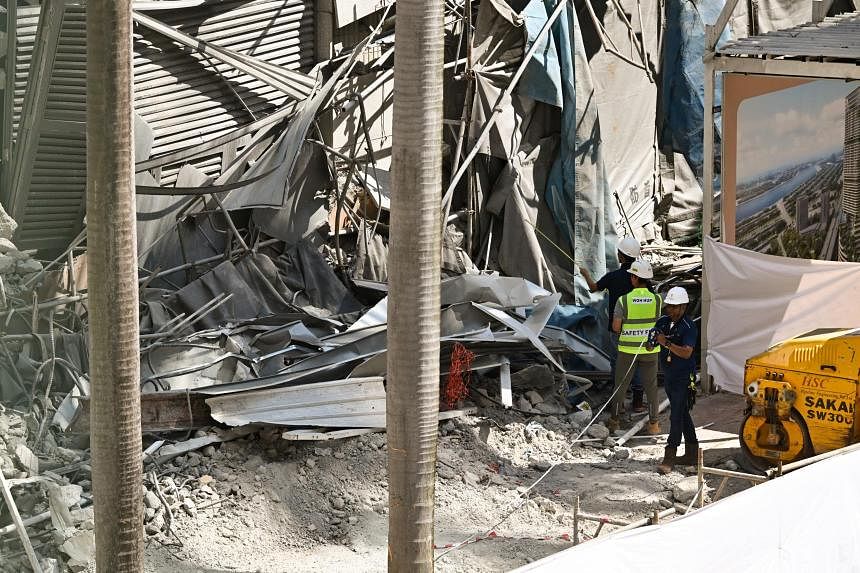SINGAPORE – While the rate of workplace deaths held steady in the first half of 2023, Senior Minister of State for Manpower Zaqy Mohamad is concerned companies are again becoming complacent in the aftermath of recent deaths.
From January to June, the fatality rate was 0.8 death per 100,000 workers, Mr Zaqy said at the Workplace Safety and Health (WSH) Awards ceremony at Resorts World Sentosa on Friday evening.
This was on a par with the rate from September 2022 to May 2023. The fatality rate for the whole of 2022 was 1.3 per 100,000 workers.
“Notwithstanding this, our preliminary investigations into recent fatalities showed that they occurred as a result of inadequate control measures and negligence. I am concerned that companies are maybe becoming complacent again,” said Mr Zaqy.
His comments come after a worker died in June when a wall collapsed during demolition works at a Tanjong Pagar worksite. Three days before that, a worker was killed after being electrocuted while installing solar panels on a rooftop.
There have been at least 16 workplace deaths so far in 2023. There were 46 fatalities in 2022 – the highest yearly toll since 2016.
On Friday, Mr Zaqy launched a free online tool for firms called iOwnWSH, which allows them to grasp their level of “WSH ownership” and get recommendations for improvement.
To get a customised report, employers have to send an online survey to their management, supervisors and workers to complete.
The report helps firms identify areas for improvement, such as a low sense of psychological safety among workers due to an organisational blame culture. “This will help them put in place appropriate interventions to improve WSH ownership,” said Mr Zaqy.
He also gave updates on a range of measures to strengthen safety unveiled in May. For instance, from June 2024, companies must deploy video surveillance systems that track high-risk work activities at construction sites for projects valued at $5 million or more.
Mr Zaqy said a public consultation is under way on a draft guide detailing the coverage of high-risk work activities and other operational considerations.
Separately, he urged chief executives and board directors of companies in higher-risk industries, such as construction and manufacturing, to attend a half-day safety programme before a requirement to do so kicks in from March 2024.
Right now, company leaders can attend the English-language programme, which will also be rolled out in Mandarin, Malay and Tamil from September. An online version will also be launched in September.
Construction workers who are work-permit holders will also be able to undergo an online safety programme – available in 11 languages – from January 2024.
Mr Zaqy said these steps, along with others rolled out before, mean “greater scrutiny and consequences” for firms that are lax.
But they also give companies more avenues to put a bigger focus on safety.
On Friday, 246 WSH awards were handed out, up from 235 in 2022.
Among the winners was Mr Gerald Chai, 37, a safety manager at construction firm Kwan Yong Construction.
Mr Chai suggested redesigning a link bridge at the site of the Kempas Residences Build-To-Order project in Kallang-Whampoa, where construction work started in 2019. It is common for such bridges to be made up of five components that would be installed at a height, he said. Workers would have to put together the elevated bridge before safety barriers are installed on it.
The redesigned bridge had two components instead, which could be assembled on the ground and brought up later.
“This not only eliminated workers’ exposure to open sites at a height; it also reduced the time needed to install it,” said Mr Chai, who bagged the WSH Officer Award.


